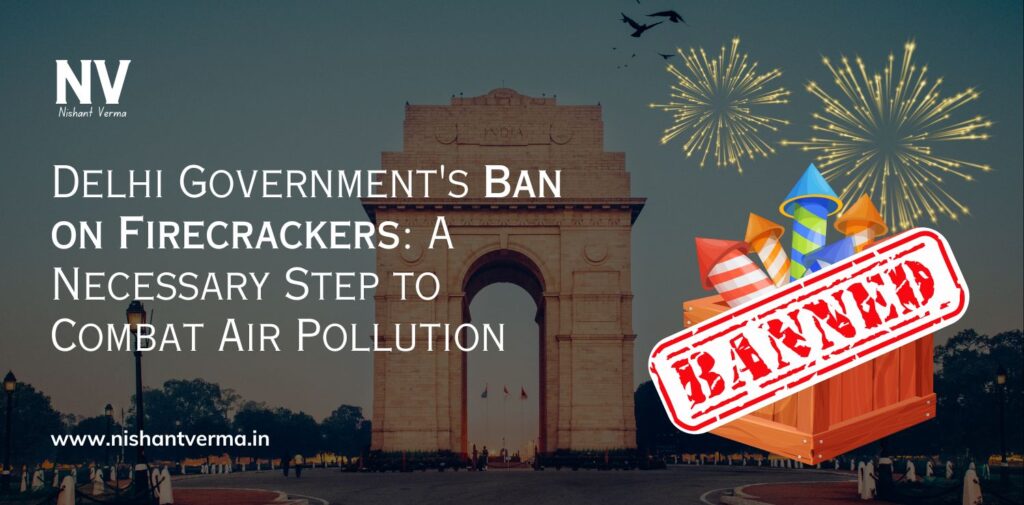The Delhi government, in a bold and necessary move, has banned the production, storage, sale, and use of firecrackers until January 1, 2024. Environment Minister Gopal Rai announced this decision, emphasizing the need to mitigate the seasonal surge in air pollution, especially around the festival of Diwali when firecracker use spikes significantly. This step is part of Delhi’s ongoing battle against its perennial pollution crisis, and it highlights a broader shift towards prioritizing public health over traditional practices.
A Response to the Pollution Crisis
Delhi has long been plagued by hazardous levels of air pollution, particularly in the winter months. This annual crisis is driven by several factors: crop stubble burning in neighboring states, vehicular emissions, industrial pollutants, and the dense population. However, the contribution of firecrackers during the festive season has been shown to significantly exacerbate the already critical situation. Firecrackers release a harmful cocktail of gases and particulate matter into the air, including sulfur dioxide, carbon monoxide, and heavy metals, which contribute to smog formation. This smog not only reduces visibility but also poses severe health risks.
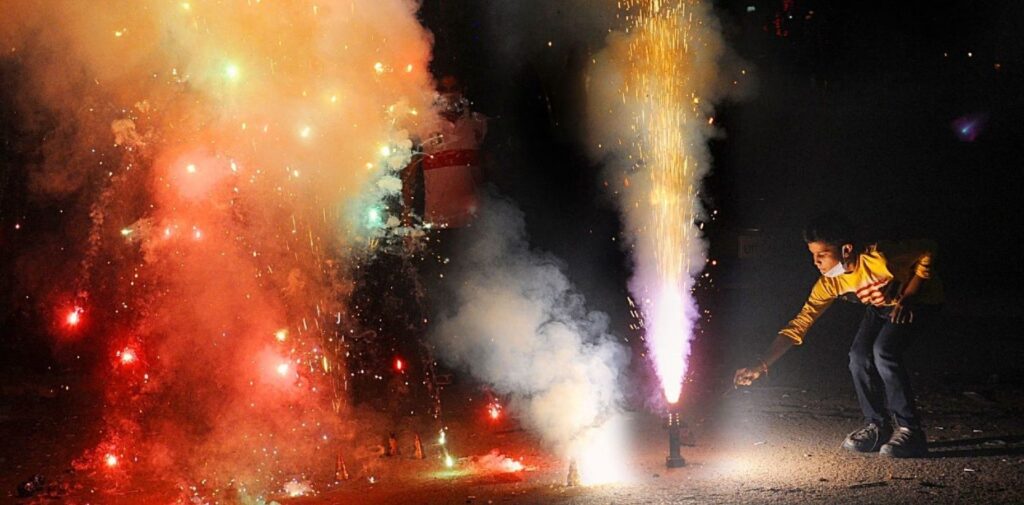
In this context, the ban on firecrackers is not just an arbitrary regulation but a targeted measure to prevent an additional source of pollution at a time when the city’s air quality is at its most vulnerable. While some may view it as an attack on tradition, the reality is that public health must take precedence, especially in a city where millions suffer from respiratory issues during the winter season.
The Link Between Firecrackers and Health Risks
Firecrackers are not merely a source of visual and auditory entertainment; they are also responsible for a range of health issues. Studies have shown that the pollutants released by firecrackers can lead to respiratory illnesses, cardiovascular problems, and even premature death. Children, the elderly, and those with pre-existing health conditions are particularly vulnerable. During Diwali, hospitals in Delhi and surrounding areas typically report a surge in cases of asthma attacks, bronchitis, and other pollution-related ailments.
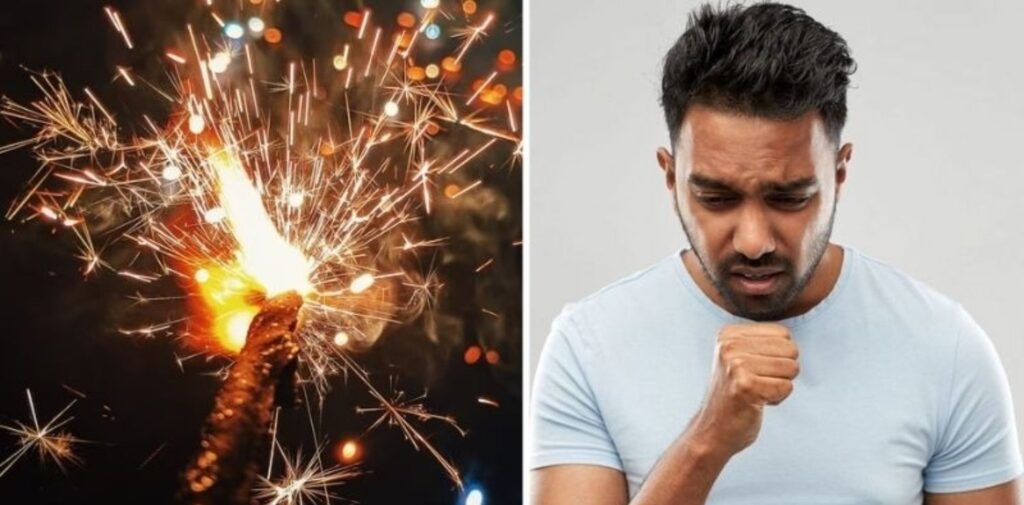
Particulate matter (PM2.5 and PM10), which is emitted in large quantities during firecracker displays, is especially harmful. These tiny particles can penetrate deep into the lungs and even enter the bloodstream, leading to long-term damage. The World Health Organization (WHO) classifies air pollution as a leading cause of premature death globally, with over seven million people dying each year due to exposure to polluted air. Delhi’s firecracker ban is a crucial step in reducing the city’s contribution to these grim statistics.
The Science Behind the Ban on Firecrackers
To understand the rationale behind the ban, it’s essential to delve into the science of pollution during the winter months. Delhi experiences a phenomenon called temperature inversion, where a layer of warm air traps cooler air at the surface. This inversion layer prevents pollutants from dispersing, causing them to accumulate at ground level. The situation is further worsened by low wind speeds, which hinder the movement of air masses.
Firecrackers exacerbate this condition by injecting a fresh wave of pollutants into an already stagnant atmosphere. The result is a thick, toxic smog that envelops the city for days, sometimes weeks, after Diwali. The particulate matter and harmful gases released by firecrackers are trapped close to the ground, where they pose the greatest danger to human health. The decision to ban firecrackers is, therefore, a science-driven approach aimed at minimizing the introduction of new pollutants during this critical period.
Alternative Ways to Celebrate
One of the main criticisms of the firecracker ban is that it takes away from the cultural and festive spirit of Diwali. Firecrackers have long been associated with the celebration of the festival, symbolizing the triumph of light over darkness. However, it’s essential to remember that traditions evolve, and so too must our approach to celebrations in the face of new challenges.
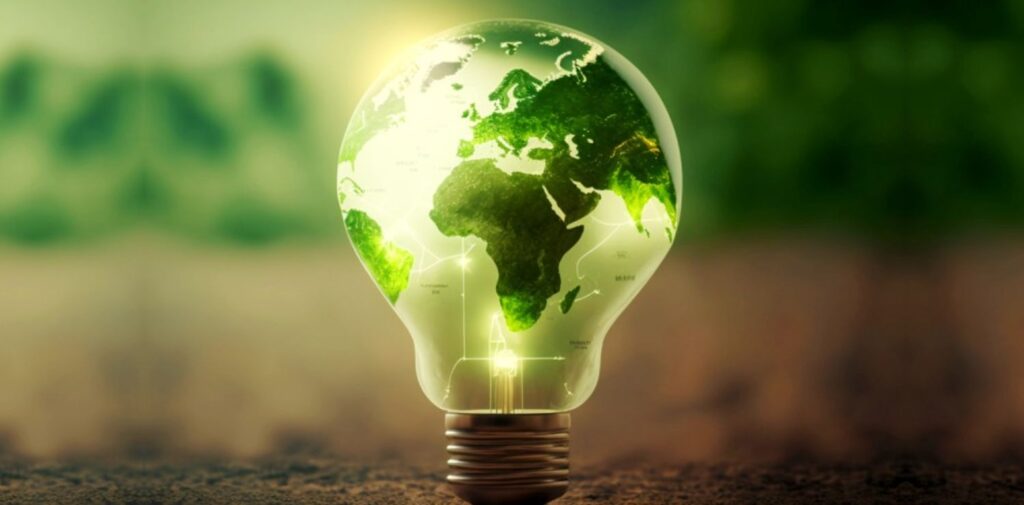
The ban on firecrackers doesn’t mean that Diwali celebrations must be muted or devoid of joy. There are numerous alternatives to firecrackers that can still capture the festive spirit without harming the environment. For example, many people are now turning to eco-friendly alternatives, such as using clay lamps (diyas) to light up their homes or organizing community light shows using LED lights. Additionally, cultural programs, music, and dance performances can bring people together to celebrate the essence of Diwali in a more sustainable way.
For those who still crave the visual spectacle of firecrackers, green firecrackers—designed to produce less pollution—can be a potential alternative, although their availability and effectiveness are still being evaluated. The key message here is that the ban doesn’t mean the end of Diwali as we know it, but rather an opportunity to embrace newer, safer ways of celebrating.
Legal and Economic Considerations
The ban on firecrackers has also raised questions about its legal and economic implications. The Delhi government has made it clear that stringent action will be taken against anyone found violating the ban. This includes fines and imprisonment for those involved in the production, sale, or use of firecrackers. While some may view this as an overly harsh stance, it reflects the seriousness of the pollution crisis and the need for strict enforcement.
From an economic perspective, the firecracker industry has long been a significant contributor to the economy, particularly in regions like Sivakasi in Tamil Nadu, where a large portion of India’s firecrackers are produced. The ban may lead to temporary economic losses for those involved in the firecracker business. However, this is where the need for a broader policy comes into play. The government could consider offering incentives and support to transition these industries towards the production of eco-friendly alternatives or other sustainable goods.
Additionally, the cost of air pollution on the economy must be considered. According to various studies, the economic burden of air pollution in India is staggering, with billions lost each year due to healthcare costs, lost productivity, and premature deaths. In this context, the firecracker ban can be seen as a preventive measure that will ultimately save more money than it costs.
Public Response and Awareness
Public response to the firecracker ban has been mixed, with many supporting the move while others express concern over the perceived loss of tradition. The key to ensuring widespread compliance and support for the ban lies in raising awareness about the health and environmental consequences of firecrackers. Public campaigns, school programs, and community outreach can play a crucial role in educating people about the benefits of a firecracker-free Diwali.
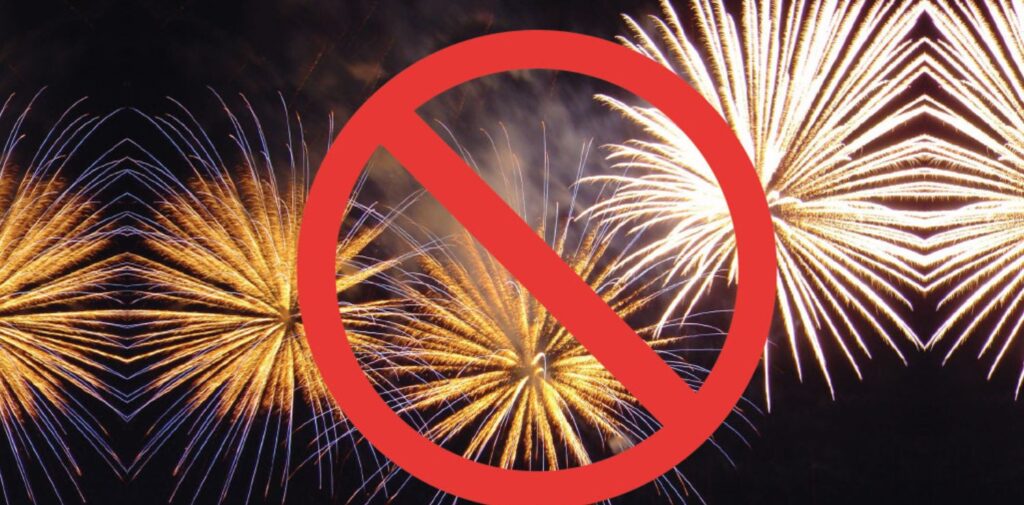
Moreover, it’s essential for the government to ensure that alternative forms of celebration are promoted and made accessible. Encouraging people to participate in collective, eco-friendly events rather than individual firecracker displays can help shift public opinion in favor of the ban.
A Step Towards Cleaner Air
In conclusion, the Delhi government’s ban on the production, storage, sale, and use of firecrackers until January 1 is a necessary and commendable step in the fight against air pollution. While it may face resistance from some quarters, the ban is ultimately in the best interest of public health and the environment. By curbing a major source of pollution during the critical winter months, the ban helps reduce the risk of respiratory illnesses, improves air quality, and signals a shift towards more sustainable celebrations.
The real challenge now lies in ensuring strict enforcement and raising public awareness about the importance of the ban. As Delhi continues to grapple with its pollution crisis, measures like these will be essential in creating a healthier, cleaner future for its residents.

